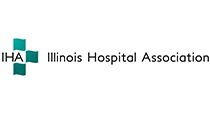IHA case studies
Central Line Blood Stream Infection Rates to Zero

Using a sequential rapid cycle improvement process to implement evidence-based practices for central line blood stream infection prevention, the hospital reduced its critical care central line blood stream infection rate from 14.6 per 1,000 device days in 2004 to zero for the past 57 months. A multidisciplinary team was formed to review literature and identify best practices. Interventions included mandatory staff education, competency assessments, line insertion supply and process changes, a daily review of line necessity, the use of chlorhexidine bathing, electronic infection surveillance, and the regular provision of performance feedback to staff using a report card format.
This case study is part of the Illinois Hospital Association's annual quality awards. Each year, IHA recognizes and celebrates the achievements of Illinois hospitals in continually improving and transforming health care in the state. These hospitals are improving health by striving to achieve the Triple Aim--improving the patient experience of care (including quality and satisfaction); improving the health of populations; and reducing the per capita cost of health care.
Award recipients achieve measurable and meaningful progress in providing care that is:
- Safe
- Timely
- Effective
- Efficient
- Equitable
- Patient-centered
Additional Resources
Equity of Care Webinar SeriesPart 2: Aligning Diversity and Inclusion, Community Engagement, Busi......
VIEW THIS RESOURCEEquity of Care Webinar SeriesPart 1: Aligning Diversity and Inclusion, Community Engagement, Busi......
VIEW THIS RESOURCETransportation and the Role of Hospitals This AHA webinar on “Transportation and the Role of Hos......
VIEW THIS RESOURCE

